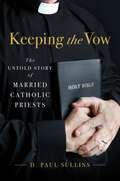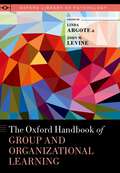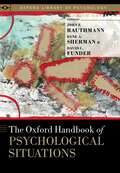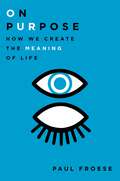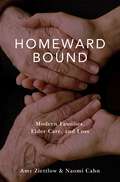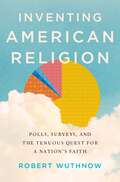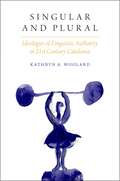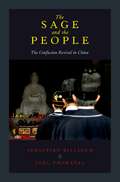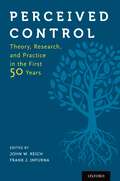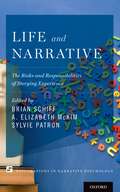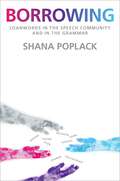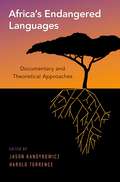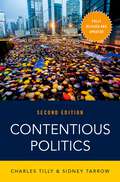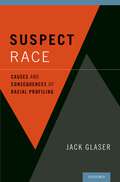- Table View
- List View
Keeping the Vow: The Untold Story of Married Catholic Priests
by D. Paul SullinsAt one of the largest Catholic churches in America, hundreds of people make their way into the spacious, well-appointed sanctuary for an evening Mass. The congregation is several times larger than most Protestant megachurches. In addition to its twenty weekly services, eight choirs, and elementary and middle schools, the church also administers a long roster of Bible studies, home groups, community outreach, and specialized programs for every conceivable class and group of persons. The sermon is delivered by the pastor and celebrant priest who, at one point, refers to his struggle to relate to his teenage daughter. No one is surprised, for the long-time leader of this prominent Catholic Church, in a conservative suburb of the Dallas-Fort Worth metroplex, is a married Catholic priest. Following the Episcopal Church's 1976 decision to ordain women, Catholic leaders in America and Rome were approached by Episcopal clergy who opposed the decision and sought conversion as a result. The Catholics responded by establishing rules that would allow the Church to receive married convert priests as exceptions to the rule of celibacy-a decree known as the Pastoral Provision. In this fascinating book, D. Paul Sullins brings to light the untold stories of these curious creatures: married Catholic priests. Sullins explores their day-to-day lives, their journey to Catholicism, and their views on issues important to the Church. Surprisingly, he reveals, married Catholic priests are more conservative than their celibate colleagues on nearly every issue, including celibacy: they think that priests should, in general, not be allowed to marry. Drawing on over 115 interviews with priests and their wives, as well as unprecedented access to the U.S. records of the Pastoral Provision, Keeping the Vow offers the first comprehensive look at these families and their unusual and difficult journey from Anglicanism to Catholicism. Looking to the future, Sullins speculates on what the experiences of these priests might tell us about the future of priestly celibacy.
The Oxford Handbook of Group and Organizational Learning (Oxford Library of Psychology)
Groups and organizations vary dramatically in their ability to learn. Some acquire substantial knowledge as a function of experience, while others do not. In groups, learning can occur at the level of the individual member and/or the group as a whole. In organizations, learning can occur at both of these levels as well as that of the wider collective. Besides varying in the amount and kind of information they acquire, groups and organizations also vary regarding their success in retaining knowledge and transferring it to other units. In general, groups and organizations that are proficient in acquiring, retaining, and transfering knowledge are more productive and more enduring than their less able counterparts. The goal of this handbook is to bring together cutting-edge theoretical and empirical work on group and organizational learning by leading scholars from several disciplines. Because many of the same processes influence learning in groups and organizations, including both kinds of learning in the same volume has the potential to facilitate the integration of knowledge and the cross-fertilization of ideas. These benefits are reciprocal, in that research at the group level can shed light on how organizations learn whereas research at the organizational level can illuminate how groups learn. By clarifying similarities and differences in the processes that underlie learning in groups and organizations, the handbook advances understanding of the causes and consequences of learning in collectives of varying size and complexity.
The Oxford Handbook of Psychological Situations (Oxford Library of Psychology)
Situations matter. They let people express their personalities and values; provoke motivations, emotions, and behaviors; and are the contexts in which people reason and act. The psychological assessment of situations is a new and rapidly developing area of research, particularly within the fields of personality and social psychology. This volume compiles state-of-the-art knowledge on psychological situations in chapters written by experts in their respective research areas. Bringing together historical reviews, theoretical pieces, methodological descriptions, and empirical applications, this volume is the definitive, go-to source for a psychology of situations.
On Purpose: How We Create the Meaning of Life
by Paul FroeseWhat is your purpose in life? This simple question motivates some of our most life-altering decisions, deeply-held beliefs, and profound emotions, as well as the choices we make every single day. How we derive meaning from our existence is crucial to finding happiness, developing relationships, and building societies. In On Purpose, Paul Froese brings together data from large national and international surveys with interviews that illuminate the ways in which people from all walks of life grapple with their continuous search for reason, truth, sense, success, happiness, and-ultimately-transcendence. Froese argues that the desire to connect with something larger than oneself is a universal urge, manifested most directly, but far from solely, in religious communities. Written in vivid, accessible prose, On Purpose takes the reader on a journey through the complexities and consequences of life's most important question. From the start, Froese admits that the answer to the question is deceptively simple: our purpose is whatever we imagine it to be. But what we imagine our purpose to be depends on innumerable factors beyond our control: our wealth, race, education level, upbringing, past experiences, and community. Froese argues that one's surroundings serve as a kind of soil that can either nurture purpose or foster meaninglessness. Framing the book around six key questions, Froese refuses to collapse the meaning of life into a single authoritative answer, as self-help gurus do. Instead, he deconstructs each question to reveal the social pathways that guide people to distinctive answers. Through lively, engaging storytelling that mixes data and analysis with literary and historical examples of the quest for purpose, Froese sheds new light on a timeless and all-too-human quandary. The moral of the book is not that life has some ultimate meaning or no meaning at all, but rather that creating a purpose-driven life has always been a collective project.
Homeward Bound: Modern Families, Elder Care, and Loss
by Naomi Cahn Amy ZiettlowHomeward Bound shows that as family structure becomes more complex, so too does elder care, and existing institutions and legal approaches are not prepared to handle those complexities. As 79 million American Baby Boomers approach old age, their diverse family structures mean the burden of care will fall on a different cast of family members than in the past. Our current approaches are based on an outdated caregiving model that presumes life-long connection between the parents and offspring, with the existence of high internal norm cohesion among family members providing a valuable safety net for caregiving. Single parent and remarried parent-led families are far more complicated, fragile, and point to the need for increased formal support from the religious, medical, legal, and public policy communities. We base our analysis on in-depth, qualitative interviews with surviving grown children and stepchildren whose mother, father, stepparent, or ex-stepparent died. Their stories illustrate the profound ways that the caregiving, mourning, and inheritance process has changed in ways not adequately reflected in formal legal, medical, and religious tools. The solutions center on awareness and preparation: providing more support for individual planning for incapacity and death and, even more importantly, creating legal, political, and social planning for the "graying of America" at a time of increasingly complex familial ties.
Homeward Bound: Modern Families, Elder Care, and Loss
by Amy Ziettlow Naomi CahnHomeward Bound shows that as family structure becomes more complex, so too does elder care, and existing institutions and legal approaches are not prepared to handle those complexities. As 79 million American Baby Boomers approach old age, their diverse family structures mean the burden of care will fall on a different cast of family members than in the past. Our current approaches are based on an outdated caregiving model that presumes life-long connection between the parents and offspring, with the existence of high internal norm cohesion among family members providing a valuable safety net for caregiving. Single parent and remarried parent-led families are far more complicated, fragile, and point to the need for increased formal support from the religious, medical, legal, and public policy communities. We base our analysis on in-depth, qualitative interviews with surviving grown children and stepchildren whose mother, father, stepparent, or ex-stepparent died. Their stories illustrate the profound ways that the caregiving, mourning, and inheritance process has changed in ways not adequately reflected in formal legal, medical, and religious tools. The solutions center on awareness and preparation: providing more support for individual planning for incapacity and death and, even more importantly, creating legal, political, and social planning for the "graying of America" at a time of increasingly complex familial ties.
Inventing American Religion: Polls, Surveys, and the Tenuous Quest for a Nation's Faith
by Robert WuthnowToday, a billion-dollar-a-year polling industry floods the media with information. Pollsters tell us not only which political candidates will win, but how we are practicing our faith. How many Americans went to church last week? Have they been born again? Is Jesus as popular as Harry Potter? Polls tell us that 40 percent of Americans attend religious services each week. They show that African Americans are no more religious than white Americans, and that Jews are abandoning their religion in record numbers. According to leading sociologist Robert Wuthnow, none of that is correct. Pollsters say that attendance at religious services has been constant for decades. But during that time response rates in polls have plummeted, robotic "push poll" calls have proliferated, and sampling has become more difficult. The accuracy of political polling can be known because elections actually happen. But there are no election results to show if the proportion of people who say they pray every day or attend services every week is correct. A large majority of the public doubts that polls can be trusted, and yet night after night on TV, polls experts sum up the nation's habits to an eager audience of millions. Inventing American Religion offers a provocative new argument about the influence of polls in contemporary American society. Wuthnow contends that polls and surveys have shaped-and distorted-how religion is understood and portrayed in the media and also by religious leaders, practitioners, and scholars. He calls for a robust public discussion about American religion that extends well beyond the information provided by polls and surveys, and suggests practical steps to facilitate such a discussion, including changes in how the results of polls and surveys are presented.
Inventing American Religion: Polls, Surveys, and the Tenuous Quest for a Nation's Faith
by Robert WuthnowToday, a billion-dollar-a-year polling industry floods the media with information. Pollsters tell us not only which political candidates will win, but how we are practicing our faith. How many Americans went to church last week? Have they been born again? Is Jesus as popular as Harry Potter? Polls tell us that 40 percent of Americans attend religious services each week. They show that African Americans are no more religious than white Americans, and that Jews are abandoning their religion in record numbers. According to leading sociologist Robert Wuthnow, none of that is correct. Pollsters say that attendance at religious services has been constant for decades. But during that time response rates in polls have plummeted, robotic "push poll" calls have proliferated, and sampling has become more difficult. The accuracy of political polling can be known because elections actually happen. But there are no election results to show if the proportion of people who say they pray every day or attend services every week is correct. A large majority of the public doubts that polls can be trusted, and yet night after night on TV, polls experts sum up the nation's habits to an eager audience of millions. Inventing American Religion offers a provocative new argument about the influence of polls in contemporary American society. Wuthnow contends that polls and surveys have shaped-and distorted-how religion is understood and portrayed in the media and also by religious leaders, practitioners, and scholars. He calls for a robust public discussion about American religion that extends well beyond the information provided by polls and surveys, and suggests practical steps to facilitate such a discussion, including changes in how the results of polls and surveys are presented.
Singular and Plural: Ideologies of Linguistic Authority in 21st Century Catalonia (Oxf Studies in Anthropology of Language)
by Kathryn A. WoolardWinner of the Ramon Llull International Prize Winner of the 2017 Society for Linguistic Anthropology Edward Sapir Book Prize A vibrant and surprisingly powerful civic and political movement for an independent Catalonia has brought renewed urgency to questions about what it means, personally and politically, to speak or not to speak Catalan and to claim Catalan identity. In this book, Kathryn Woolard develops a framework for analyzing ideologies of linguistic authority and uses it to illuminate the politics of language in Spain and Catalonia, where Catalan jostles with Castilian for legitimacy. Longitudinal research across decades of political autonomy contextualizes this ethnographic study of the social meaning of Catalan in the 21st century. Part I lays out the ideologies of linguistic authenticity, anonymity, and naturalism that typically underpin linguistic authority in the modern western world, and gives an overview of a shift in the ideological grounding of linguistic authority in contemporary Catalonia. Part II examines discourses in the media surrounding three public linguistic controversies: an immigrant president's linguistic competence, a municipal festival, and an international book fair. Part III explores individuals' linguistic practices and views, drawing on classroom ethnographies and interviews with two generations of young people from the same high school. The book argues that there is an ongoing shift at both public and personal levels away from the ethnolinguistic authenticity that powered relations in the early transition to political autonomy, and toward new discourses of anonymity, rooted cosmopolitanism, and authenticity understood as a project rather than a matter of origins and essence. This shift is reflected in the current sovereignty movement.
Solitary Action: Acting on Our Own in Everyday Life
by Ira J. CohenFrom a private nature walk to an engrossing novel, humans spend a vast amount of time engaged in solitary activities. However, despite the fact that individual activities are a prevalent part of everyday life, most scholarly research has been devoted to social interaction rather than solitary action. Ira Cohen's Solitary Action fills this intellectual void, identifying and discussing four basic forms of individual action: peripatetics, engrossments, regimens, and reflexives. Cohen explores the differences and similarities among the forms, specifically delving into the structural contrast between behaviors with rigid constraints, such as the game of solitaire, and behaviors which require creativity and spontaneity, such as a solo jazz improvisation. Lucid and relatable, Solitary Action links its arguments with examples from literature, personal narrative, and daily life, shedding light upon the understated significance of individual activities. The book concludes with a discussion of extensive retreats into solitude for religious, aesthetic, and self-restorative experiences, including examples from Thomas Merton and Henry David Thoreau. Ultimately, Cohen's findings promise to inspire new inquiries into the nature of social behavior by opening a new domain of everyday activities to the attention previously reserved for social interaction.
The Sage and the People: The Confucian Revival in China
by Sebastien Billioud Joel ThoravalWinner of the 2015 Pierre-Antoine Bernheim Prize for the History of Religion by the Académie des Inscriptions et Belles-Lettres After a century during which Confucianism was viewed by academics as a relic of the imperial past or, at best, a philosophical resource, its striking comeback in Chinese society today raises a number of questions about the role that this ancient tradition might play in a contemporary context. The Sage and the People is the first comprehensive enquiry into the "Confucian revival" that began in China during the 2000s. Based on extensive anthropological fieldwork carried out over eight years in various parts of the country, it explores the re-appropriation and reinvention of popular practices in fields as diverse as education, self-cultivation, religion, ritual, and politics. The book analyzes the complexity of the "Confucian revival" within the broader context of emerging challenges to such categories as religion, philosophy, and science that prevailed in modernization narratives throughout the last century. Exploring state cults both in Mainland China and Taiwan, authors Sébastien Billioud and Joël Thoraval compare the interplay between politics and religion on the two shores of the Taiwan strait and attempt to shed light on possible future developments of Confucianism in Chinese society.
Lives in Common: Arabs and Jews in Jerusalem, Jaffa and Hebron
by Menachem KleinMost books dealing with the Israeli-Palestinian conflict see events through the eyes of policy-makers, generals or diplomats. Menachem Klein offers an illuminating alternative by telling the intertwined histories, from street level upwards, of three cities-Jerusalem, Jaffa, and Hebron-and their intermingled Jewish, Muslim and Christian inhabitants, from the nineteenth century to the present. Each of them was and still is a mixed city. Jerusalem and Hebron are holy places, while Jaffa till 1948 was Palestine's principal city and main port of entry. Klein portrays a society in the late Ottoman period in which Jewish-Arab interactions were intense, frequent, and meaningful, before the onset of segregation and separation gradually occurred in the Mandate era. The unequal power relations and increasing violence between Jews and Arabs from 1948 onwards are also scrutinised. Throughout, Klein bases his writing not on the official record but rather on a hitherto hidden private world of Jewish-Arab encounters, including marriages and squabbles, kindnesses and cruelties, as set out in dozens of memoirs, diaries, biographies and testimonies. Lives in Common brings together the voices of Jews and Arabs in a mosaic of fascinating stories, of lived experiences and of the major personalities that shaped them over the last 150 years. Most books dealing with the Israeli-Palestinian conflict see events through the eyes of policy-makers, generals or diplomats. Menachem Klein offers an illuminating alternative by telling the intertwined histories, from street level upwards, of three cities-Jerusalem, Jaffa, and Hebron-and their intermingled Jewish, Muslim and Christian inhabitants, from the nineteenth century to the present. Each of them was and still is a mixed city. Jerusalem and Hebron are holy places, while Jaffa till 1948 was Palestine's principal city and main port of entry. Klein portrays a society in the late Ottoman period in which Jewish-Arab interactions were intense, frequent, and meaningful, before the onset of segregation and separation gradually occurred in the Mandate era. The unequal power relations and increasing violence between Jews and Arabs from 1948 onwards are also scrutinised. Throughout, Klein bases his writing not on the official record but rather on a hitherto hidden private world of Jewish-Arab encounters, including marriages and squabbles, kindnesses and cruelties, as set out in dozens of memoirs, diaries, biographies and testimonies. Lives in Common brings together the voices of Jews and Arabs in a mosaic of fascinating stories, of lived experiences and of the major personalities that shaped them over the last 150 years.
Lives in Common: Arabs and Jews in Jerusalem, Jaffa and Hebron
by Menachem KleinMost books dealing with the Israeli-Palestinian conflict see events through the eyes of policy-makers, generals or diplomats. Menachem Klein offers an illuminating alternative by telling the intertwined histories, from street level upwards, of three cities-Jerusalem, Jaffa, and Hebron-and their intermingled Jewish, Muslim and Christian inhabitants, from the nineteenth century to the present. Each of them was and still is a mixed city. Jerusalem and Hebron are holy places, while Jaffa till 1948 was Palestine's principal city and main port of entry. Klein portrays a society in the late Ottoman period in which Jewish-Arab interactions were intense, frequent, and meaningful, before the onset of segregation and separation gradually occurred in the Mandate era. The unequal power relations and increasing violence between Jews and Arabs from 1948 onwards are also scrutinised. Throughout, Klein bases his writing not on the official record but rather on a hitherto hidden private world of Jewish-Arab encounters, including marriages and squabbles, kindnesses and cruelties, as set out in dozens of memoirs, diaries, biographies and testimonies. Lives in Common brings together the voices of Jews and Arabs in a mosaic of fascinating stories, of lived experiences and of the major personalities that shaped them over the last 150 years. Most books dealing with the Israeli-Palestinian conflict see events through the eyes of policy-makers, generals or diplomats. Menachem Klein offers an illuminating alternative by telling the intertwined histories, from street level upwards, of three cities-Jerusalem, Jaffa, and Hebron-and their intermingled Jewish, Muslim and Christian inhabitants, from the nineteenth century to the present. Each of them was and still is a mixed city. Jerusalem and Hebron are holy places, while Jaffa till 1948 was Palestine's principal city and main port of entry. Klein portrays a society in the late Ottoman period in which Jewish-Arab interactions were intense, frequent, and meaningful, before the onset of segregation and separation gradually occurred in the Mandate era. The unequal power relations and increasing violence between Jews and Arabs from 1948 onwards are also scrutinised. Throughout, Klein bases his writing not on the official record but rather on a hitherto hidden private world of Jewish-Arab encounters, including marriages and squabbles, kindnesses and cruelties, as set out in dozens of memoirs, diaries, biographies and testimonies. Lives in Common brings together the voices of Jews and Arabs in a mosaic of fascinating stories, of lived experiences and of the major personalities that shaped them over the last 150 years.
Perceived Control: Theory, Research, and Practice in the First 50 Years
by John W. Reich and Frank J. InfurnaThe concept of the "locus of control" is one of the most influential in all of the psychological sciences. Initially proposed by Julian Rotter in 1966, the year 2016 marks the 50th anniversary of this remarkable breakthrough, subsequently inspiring thousands of research studies in the human sciences--research that has only served to deepen the utility of this amazing concept. Edited by John W. Reich and Frank J. Infurna, Perceived Control: Theory, Research, and Practice in the First 50 Years commemorates this important anniversary by featuring contributions from leading figures of the time--some of whom were there at the very beginning of Rotter's extraordinary breakthrough--to give readers a valuable historical record and measuring stick to illustrate how far we've come. Other contributors to this volume expertly present contemporary and cutting-edge summaries of the current state of our knowledge all while giving us a roadmap for future developments and directions. What have these developments revealed about basic human strengths and capacities? Why has this concept proven so remarkably effective in illuminating our everyday life in sickness and health? Perceived Control is a fascinating work that incorporates research from Rotter's original concept, and addresses many of the leading comparable concepts that have since evolved: self-efficacy, personal mastery, competence, primary and secondary control, and more specific topics such as health locus of control,learned helplessness, and other heuristic concepts discussed in many different fields of psychology and the allied disciplines. As Perceived Control skillfully attests, Rotter's work continues to thrive, leaving little doubt that its infl uence will endure for another half century or more.
Perceived Control: Theory, Research, and Practice in the First 50 Years
The concept of the "locus of control" is one of the most influential in all of the psychological sciences. Initially proposed by Julian Rotter in 1966, the year 2016 marks the 50th anniversary of this remarkable breakthrough, subsequently inspiring thousands of research studies in the human sciences--research that has only served to deepen the utility of this amazing concept. Edited by John W. Reich and Frank J. Infurna, Perceived Control: Theory, Research, and Practice in the First 50 Years commemorates this important anniversary by featuring contributions from leading figures of the time--some of whom were there at the very beginning of Rotter's extraordinary breakthrough--to give readers a valuable historical record and measuring stick to illustrate how far we've come. Other contributors to this volume expertly present contemporary and cutting-edge summaries of the current state of our knowledge all while giving us a roadmap for future developments and directions. What have these developments revealed about basic human strengths and capacities? Why has this concept proven so remarkably effective in illuminating our everyday life in sickness and health? Perceived Control is a fascinating work that incorporates research from Rotter's original concept, and addresses many of the leading comparable concepts that have since evolved: self-efficacy, personal mastery, competence, primary and secondary control, and more specific topics such as health locus of control,learned helplessness, and other heuristic concepts discussed in many different fields of psychology and the allied disciplines. As Perceived Control skillfully attests, Rotter's work continues to thrive, leaving little doubt that its infl uence will endure for another half century or more.
Diary Methods: Understanding Qualitative Research (Understanding Qualitative Research)
by Lauri L. HyersQualitative diary research is a unique tool with strengths that set it apart from other research methods. The diary prioritizes events embedded in context and time, a perspective that serves to destabilize constants, revealing the complex intersectionality of experience. Over the last several centuries, the mechanics of diary-keeping have evolved from simple records of ephemera into a primary research method. Today both archival and solicited diaries are used by social scientists who employ a range of qualitative, quantitative, and mixed-method data collection technologies. Researchers may consider the very possibility of conducting a qualitative diary study with some hesitation--in addition to sounding like a good deal of work, the method seems somewhat off the beaten path, a bit mysterious, and even kitschy. With a better understanding of what is involved, those who are considering the method may come to find that a diary study is well worth their while. In Diary Methods, Hyers provides her readers with a wealth of guidance and expert insight to ensure the success of their qualitative diary studies. The history of the diary from cultural phenomenon to social scientific method are explored, followed by a discussion of the use of archival and solicited diaries in qualitative designs, diary data collection and management, qualitative analysis and coding, composition and diary report writing, evaluating diary research, and special ethical considerations when using diaries in research.
Diary Methods: Understanding Qualitative Research (Understanding Qualitative Research)
by Lauri L. HyersQualitative diary research is a unique tool with strengths that set it apart from other research methods. The diary prioritizes events embedded in context and time, a perspective that serves to destabilize constants, revealing the complex intersectionality of experience. Over the last several centuries, the mechanics of diary-keeping have evolved from simple records of ephemera into a primary research method. Today both archival and solicited diaries are used by social scientists who employ a range of qualitative, quantitative, and mixed-method data collection technologies. Researchers may consider the very possibility of conducting a qualitative diary study with some hesitation--in addition to sounding like a good deal of work, the method seems somewhat off the beaten path, a bit mysterious, and even kitschy. With a better understanding of what is involved, those who are considering the method may come to find that a diary study is well worth their while. In Diary Methods, Hyers provides her readers with a wealth of guidance and expert insight to ensure the success of their qualitative diary studies. The history of the diary from cultural phenomenon to social scientific method are explored, followed by a discussion of the use of archival and solicited diaries in qualitative designs, diary data collection and management, qualitative analysis and coding, composition and diary report writing, evaluating diary research, and special ethical considerations when using diaries in research.
Life and Narrative: The Risks and Responsibilities of Storying Experience (Explorations in Narrative Psychology)
by Brian Schiff, A. Elizabeth McKim and Sylvie PatronThe challenge of life and literary narrative is the central and perennial mystery of how people encounter, manage, and inhabit a self and a world of their own - and others' - creations. With a nod to the eminent scholar and psychologist Jerome Bruner, Life and Narrative: The Risks and Responsibilities of Storying Experience explores the circulation of meaning between experience and the recounting of that experience to others. A variety of arguments center around the kind of relationship life and narrative share with one another. In this volume, rather than choosing to argue that this relationship is either continuous or discontinuous, editors Brian Schiff, A. Elizabeth McKim, and Sylvie Patron and their contributing authors reject the simple binary and masterfully incorporate a more nuanced approach that has more descriptive appeal and theoretical traction for readers. Exploring such diverse and fascinating topics as 'Narrative and the Law,' 'Narrative Fiction, the Short Story, and Life,' 'The Body as Biography,' and 'The Politics of Memory,' Life and Narrative features important research and perspectives from both up-and-coming researchers and prominent scholars in the field - many of which who are widely acknowledged for moving the needle forward on the study of narrative in their respective disciplines and beyond.
Life and Narrative: The Risks and Responsibilities of Storying Experience (Explorations in Narrative Psychology)
The challenge of life and literary narrative is the central and perennial mystery of how people encounter, manage, and inhabit a self and a world of their own - and others' - creations. With a nod to the eminent scholar and psychologist Jerome Bruner, Life and Narrative: The Risks and Responsibilities of Storying Experience explores the circulation of meaning between experience and the recounting of that experience to others. A variety of arguments center around the kind of relationship life and narrative share with one another. In this volume, rather than choosing to argue that this relationship is either continuous or discontinuous, editors Brian Schiff, A. Elizabeth McKim, and Sylvie Patron and their contributing authors reject the simple binary and masterfully incorporate a more nuanced approach that has more descriptive appeal and theoretical traction for readers. Exploring such diverse and fascinating topics as 'Narrative and the Law,' 'Narrative Fiction, the Short Story, and Life,' 'The Body as Biography,' and 'The Politics of Memory,' Life and Narrative features important research and perspectives from both up-and-coming researchers and prominent scholars in the field - many of which who are widely acknowledged for moving the needle forward on the study of narrative in their respective disciplines and beyond.
Borrowing: Loanwords in the Speech Community and in the Grammar
by Shana PoplackStudies of bilingual behavior have been proliferating for decades, yet short shrift has been given to its major manifestation, the incorporation of words from one language into the discourse of another. This volume redresses that imbalance by going straight to the source: bilingual speakers in their social context. Building on more than three decades of original research based on vast quantities of spontaneous performance data and a highly ramified analytical apparatus, Shana Poplack characterizes the phenomenon of lexical borrowing in the speech community and in the grammar, both synchronically and diachronically. In contrast to most other treatments, which deal with the product of borrowing (if they consider it at all), this book examines the process: how speakers go about incorporating foreign items into their bilingual discourse; how they adapt them to recipient-language grammatical structure; how these forms diffuse across speakers and communities; how long they persist in real time; and whether they change over the duration. Attacking some of the most contentious issue in language mixing research empirically, it tests hypotheses about established loanwords, nonce borrowings and code-switches on a wealth of unique datasets on typologically similar and distinct language pairs. A major focus is the detailed analysis of integration: the principal mechanism underlying the borrowing process. Though the shape the borrowed form assumes may be colored by community convention, Poplack shows that the act of transforming donor-language elements into native material is universal. Emphasis on actual speaker behavior coupled with strong standards of proof, including data-driven reports of rates of occurrence, conditioning of variant choice and measures of statistical significance, make Borrowing an indispensable reference on language contact and bilingual behavior.
Africa's Endangered Languages: Documentary and Theoretical Approaches
Relatively little is known about Africa's endangered languages. Unlike indigenous languages in Australia, North Asia, and the Americas, which are predominantly threatened by colonizers, African languages are threatened most immediately by other local languages. As a result, the threat of language extinction is perceived as lower in Africa than in other parts of the globe, and a disproportionate amount of research is devoted to the study of endangered African languages when compared to any other linguistically threatened region in the world. There are approximately 308 highly endangered languages spoken in Africa (roughly 12% of all African languages) and at least 201 extinct African languages. This volume hopes to illuminate and challenge this trend. Chapters offer both documentary and theoretical perspectives, emphasizing the symbiotic relationship between the two approaches and its implications for the preservation of endangered languages, both in the African context and more broadly. Documentary-oriented chapters deal with key issues in African language documentation including language preservation and revitalization, community activism, and data collection and dissemination methodologies, among others. Theoretically-oriented chapters provide detailed descriptions and analyses of phonetic, phonological, morphological, syntactic, and semantic phenomena, and connect these to current theoretical issues and debates. Africa's Endangered Languages provides thorough coverage of a continent's neglected languages that will spur linguists and Africanists alike to work to protect them.
Contentious Politics (Cambridge Studies In Contentious Politics Ser.)
by Charles Tilly Sidney TarrowRevolutions, social movements, religious and ethnic conflict, nationalism and civil rights, and transnational movements: these forms of contentious politics combine in Charles Tilly's and Sidney Tarrow's Contentious Politics. The authors present a set of analytical tools and procedures for study, comparison, and explanation of these very different sorts of contention. Drawing on many historical and contemporary cases, the book shows that similar principles describe and explain a wide variety of struggles as well as many more routine forms of politics. This fully revised and updated edition explores some of the major contentious events that have taken place since the original book was published in 2007, including the Occupy movement in the United States, the campaign for free elections in the city of Hong Kong, insurrections against Middle Eastern dictatorships, and armed conflicts on the border of the former Soviet Union. Comprehensive and empirically rich, Contentious Politics, 2nd edition remains a valuable resource for developing a more nuanced understanding of modern social movements and political conflicts for students and scholars.
Contentious Politics
by Charles Tilly Sidney TarrowRevolutions, social movements, religious and ethnic conflict, nationalism and civil rights, and transnational movements: these forms of contentious politics combine in Charles Tilly's and Sidney Tarrow's Contentious Politics. The authors present a set of analytical tools and procedures for study, comparison, and explanation of these very different sorts of contention. Drawing on many historical and contemporary cases, the book shows that similar principles describe and explain a wide variety of struggles as well as many more routine forms of politics. This fully revised and updated edition explores some of the major contentious events that have taken place since the original book was published in 2007, including the Occupy movement in the United States, the campaign for free elections in the city of Hong Kong, insurrections against Middle Eastern dictatorships, and armed conflicts on the border of the former Soviet Union. Comprehensive and empirically rich, Contentious Politics, 2nd edition remains a valuable resource for developing a more nuanced understanding of modern social movements and political conflicts for students and scholars.
Suspect Race: Causes and Consequences of Racial Profiling
by Jack GlaserUntil now, most discussion of racial profiling has given only fleeting consideration of its causes. Those causes are overwhelmingly psychological. In Suspect Race, social psychologist and public policy expert Jack Glaser leverages a century's worth of social psychological research to provide a clear understanding of how stereotypes, even those operating outside of conscious awareness or control, can cause police to make discriminatory judgments and decisions about who to suspect, stop, question, search, use force on, and arrest. Glaser argues that stereotyping, even nonconscious stereotyping, is a completely normal human mental process, but that it leads to undesirable discriminatory outcomes. Police officers are normal human beings with normal cognition. They are therefore influenced by racial stereotypes that have long connected minorities with aggression and crime. Efforts to merely prohibit racial profiling are inadequate. Additionally, Glaser finds evidence that racial profiling can actually increase crime, and he considers the implications for racial profiling in counterterrorism, finding some similarities and some interesting differences with drug war profiling. Finally, he examines the policy landscape on which racial profiling resides and calls for improved data collection and supervision, reduced discretion, and increased accountability. Drawing on criminology, history, psychological science, and legal and policy analysis, Glaser offers a broad and deep assessment of the causes and consequence of racial profiling. Suspect Race brings to bear the vast scientific literature on intergroup stereotyping to offer the first in-depth and accessible understanding of the primary cause of racial profiling, and to explore implications for policy.
